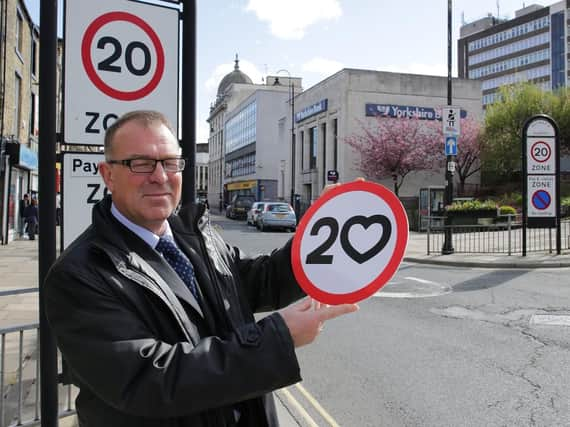Calderdale Council: 20mph zones are saving accidents '“ and money


Calderdale Council’s Place Scrutiny Panel, looking at the impact of the controversial £820,000 “Twenty’s Plenty” scheme, heard casualties had reduced by almost a third over three years of the older schemes and possibly by as much as 40 per cent in newer ones.
The zones have been at the centre of debate among councillors and the wider public as to whether they are effective or value for money.
Advertisement
Hide AdAdvertisement
Hide AdThe authority’s director of public health, Paul Butcher, said that the reduction in injuries had saved the public purse around £3 million, given Department of Transport figures that showed every injury accident cost £23,500.
Data was taken from seven areas for three years before the introduction of 20mph areas in 2014 and for three years afterwards, and from more recently installed zones which do not yet have a full three years’ data available.
In the former category casualties were down from 171 before to 120 after, and in the latter category from 258 down to an estimated pro-rata 155.
Together potentially they equate to 154 fewer injuries, said his report.
Advertisement
Hide AdAdvertisement
Hide AdOn average drivers were slowing down by an average 1.9 miles per hour in the zones, three and a half million readings had shown, but with variations in some areas.
Panel chairman Councillor Andrew Tagg (Con, Skircoat) said some figures were surprising, for example the pre-20mph casualty rate at Ovenden and Illingworth, Halifax – 62 in the three years before its introduction (down to a pro-rata 17 over three years post installation).
Councillors agreed to support continued monitoring of casualty trends, promoting the 20mph zones and exploring further funding for extra movable vehicle activated signs.
The council will also work with Calderdale Road Safety Partnership Board to tackle speeding issues where still occur in some 20mph zones.
Advertisement
Hide AdAdvertisement
Hide AdMr Butcher said surveys showed more than 80 per cent of people in Todmorden and Sowerby Bridge backed the zones, while support in making them work was provided by West Yorkshire Police’s Operation Hawmill.
Councillors suggested the devil was in the detail and that closer analysis of the data could point the way forward for the project.
Councillor Dave Young (Lab, Calder), said the key figure was the 30 per cent reduction over three years. “That’s fantastic, proof the whole thing has been a great success,” he said.
Other councillors remained sceptical, with Councillor Roger Taylor (Con, Northowram and Shelf) saying he thought money was being wasted. Other stakeholders including businesses had not been asked what they thought about it, he said.
Advertisement
Hide AdAdvertisement
Hide AdCouncillor Jenny Lynn (Lab, Park) said despite the new zones, speeding in one part of her ward had got worse and suggested closer analysis of the statistics would help identify issues and anomalies.
Councillor Tagg agreed that a carefully targeted approach might be more effective. “If we are successful in this, we want to know the reasons why,” he said.